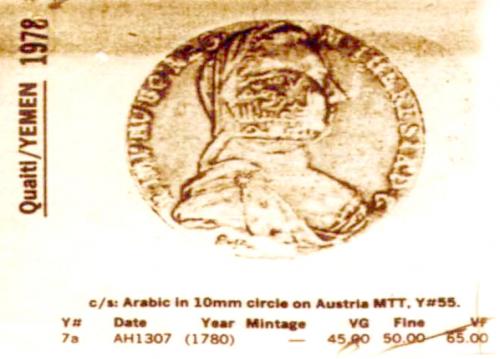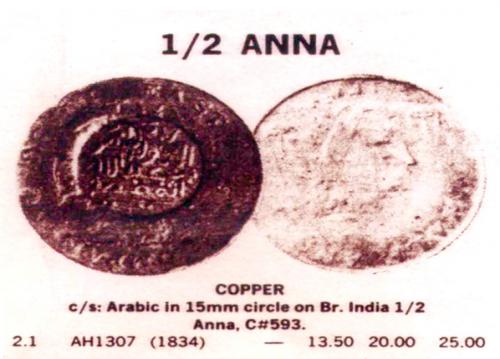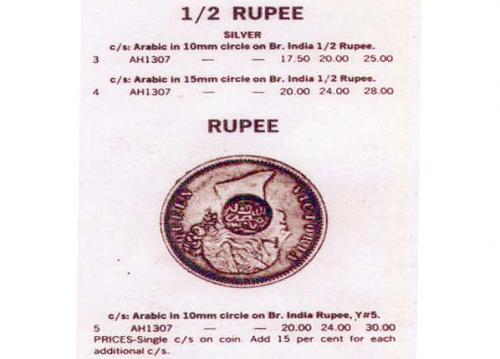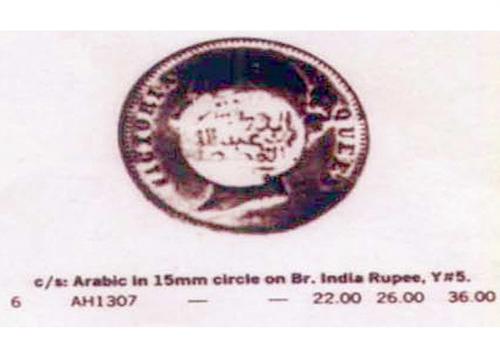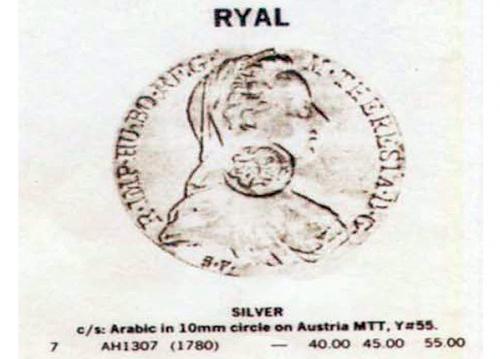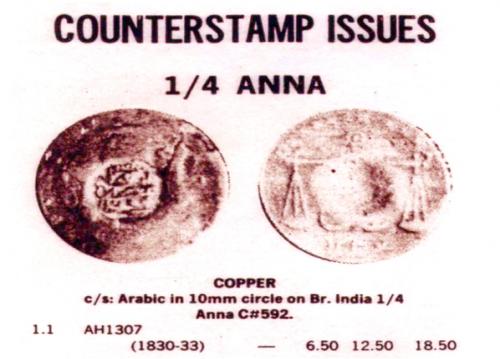
|
The coinage of the Qu’aiti State as instituted by Sultan Awadh bin Omar Al-Qu’aiti. He was the first and the last Qu’aiti Sultan to mint the coins in his name while his nephew Munassar bin Abdullah Al-Qu’aiti was to counter-strike specie then acceptable in Hadhramaut under the assumed title al-Dawlah, a term meaning ‘ruler’ in Hadhramaut. The World Coin Catalogue refers to a gold sovereign, silver half riyal, a third riyal and copper and bronze ‘khumsiyya’ (wrongly transcribed as ‘chomish’) being instituted by him. The value of the half and the third riyals is linked in weight and value to the Maria Theresa Thaler, known locally as a riyal. The years and the other details of the issues seen are given below each coin. Munassar bin Abdullah’s counter-stamp bore the date of the year following his father’s death. The use of the indigenous issues came to an end by 1944 (1363 Hijri). The Indian Rupee, as a firm official currency, was to last till after India’s independence in 1952 (1371 Hijri) when the British East African Currency Board’s Shilling was to be adopted. This currency was to last till the introduction of the South Arabian Currency Board’s Dinar (Pound) in 1963/ 4 (1383 Hijri). |

